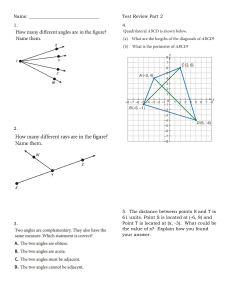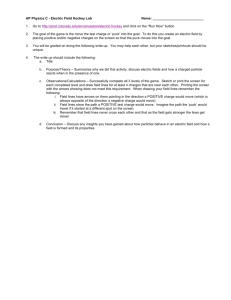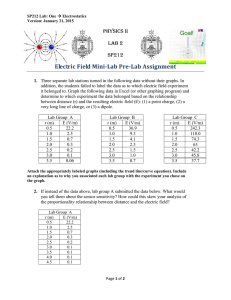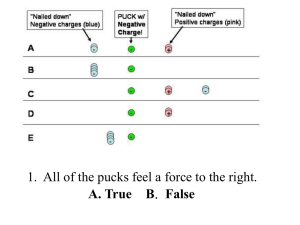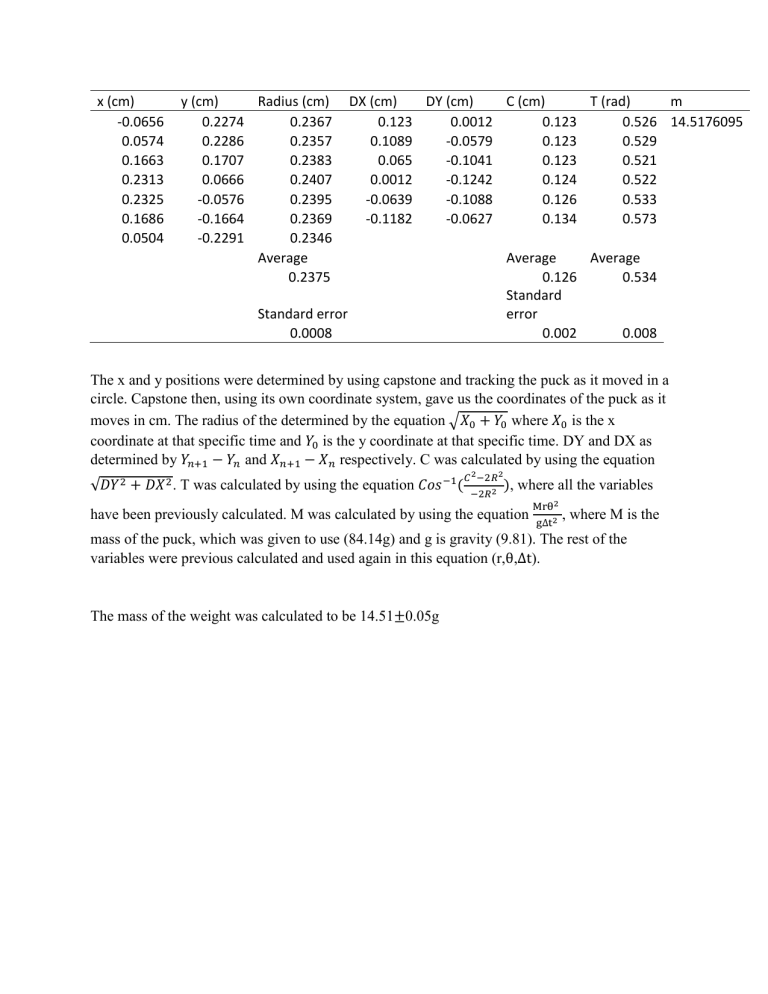
x (cm) -0.0656 0.0574 0.1663 0.2313 0.2325 0.1686 0.0504 y (cm) Radius (cm) 0.2274 0.2367 0.2286 0.2357 0.1707 0.2383 0.0666 0.2407 -0.0576 0.2395 -0.1664 0.2369 -0.2291 0.2346 Average 0.2375 DX (cm) DY (cm) C (cm) T (rad) m 0.123 0.0012 0.123 0.526 14.5176095 0.1089 -0.0579 0.123 0.529 0.065 -0.1041 0.123 0.521 0.0012 -0.1242 0.124 0.522 -0.0639 -0.1088 0.126 0.533 -0.1182 -0.0627 0.134 0.573 Average Average 0.126 0.534 Standard error 0.002 0.008 Standard error 0.0008 The x and y positions were determined by using capstone and tracking the puck as it moved in a circle. Capstone then, using its own coordinate system, gave us the coordinates of the puck as it moves in cm. The radius of the determined by the equation √𝑋0 + 𝑌0 where 𝑋0 is the x coordinate at that specific time and 𝑌0 is the y coordinate at that specific time. DY and DX as determined by 𝑌𝑛+1 − 𝑌𝑛 and 𝑋𝑛+1 − 𝑋𝑛 respectively. C was calculated by using the equation √𝐷𝑌 2 + 𝐷𝑋 2 . T was calculated by using the equation 𝐶𝑜𝑠 −1 ( 𝐶 2 −2𝑅2 −2𝑅2 ), where all the variables have been previously calculated. M was calculated by using the equation Mrθ2 g∆t2 , where M is the mass of the puck, which was given to use (84.14g) and g is gravity (9.81). The rest of the variables were previous calculated and used again in this equation (r,θ,∆t). The mass of the weight was calculated to be 14.51±0.05g
